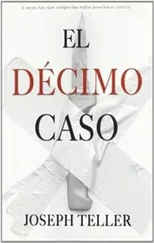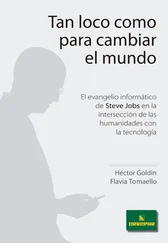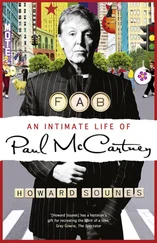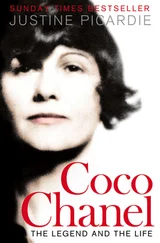Very shortly after this meeting, Gabrielle returned to Paris, reinstated herself at the Ritz and set about getting rid of her buildings on rue Cambon, with the exception of number 31. Here she refurbished the boutique on the ground floor; the grand salon, where she had always shown her collections; and her third-floor apartment and workrooms above. Once again, Gabrielle spent her days working and entertaining at rue Cambon, and her nights over the road at the Ritz. She also sold her beautiful house in the south of France. La Pausa was bought by Emery Reves, literary agent and friend to Winston Churchill. It seems fitting that not only was Churchill to spend much time in his last years at this, one of Gabrielle’s most perfect creations, he would also write a good part of his war memoirs there. Gabrielle would later buy a house in Switzerland for retirement, but no longer kept a home in France outside Paris.
She sold La Pausa knowing she would need every centime she could lay her hands on. As much as anything, however, letting it go was a return to her real life: her work. La Pausa had represented the discreet yet luxurious leisure Gabrielle had been one of the first to develop. There she had shared some of the best aspects of the life she had created. Gabrielle was controlling, but she was also its contrary, nonjudgmental, and life at La Pausa had been very nonjudgmental of its guests. Gabrielle had said, “It pleases me infinitely more to give than to receive, whether it is at work, in love or in friendship.” 8In relinquishing La Pausa, she was taking stock before relaunching herself upon the world. Paramount was her belief in the future. In the end, houses and many objects were consigned to the past. Her rebirth was to be about work, not holiday. Connected with this thinking was a more profound move.
Returning to a hotel, to her work and the recreation of her couture, Gabrielle was, once and for all, giving up on a life that was private. Given her times, her upbringing and her own character, she had failed in her search for long-term emotional contentment. Indeed, she no longer believed it was possible. Work and her public face were the only places where fulfillment had always followed her, so she would devote the remainder of her life to living in the public gaze. From now on, she would cultivate her legend.
Gabrielle’s faith — perhaps credo is a better word — that only she knew how to dress women nowadays sounds like bombastic exaggeration. But while the couture of the contemporary stars — Dior, Givenchy, Fath — had made women look and feel beautiful in clothes that were sensational, opulent and romantic, it was also primarily about escape: escape from the realities of modern life. For some time after the war, that was exactly what the world had wanted. Male designers now dressed women either as exquisite archetypes or as experiments in geometry and color, sometimes with little thought for the body underneath. The sheath, the tent, the trumpet, the A line and the H line were executed in lemon yellows, pumpkin oranges and bright sky blue. Buyers began to complain that there was no decisive lead.
However radical and modern these styles appeared, essentially they alluded to a past where woman was simply decorative. Subtly disempowering her, they implied that the realities of the modern life she actually had to maneuver in just didn’t exist. Skirts were sometimes so tight she could hardly walk, and corsets, jackets and dresses had returned to the underlying whalebone structure of woman’s grandmother, squeezing her into the desirable hourglass shape. These clothes were not about comfort. They transformed woman into a beautiful kind of make-believe. Good dressing was dressing up; it was once again about theater. Against this, Gabrielle’s lament “Dressing women is not a man’s job. They dress them badly because they scorn them” at first sounded a dull disgruntled note.
Meanwhile, hearing of her projected return, one of these men, Balenciaga, a gentle and gifted man who was also a great admirer of Gabrielle’s work, declared, “Chanel is an eternal bomb. None of us can defuse her,” and sent her a heart-shaped bouquet. She was unable to let down her defensive shield; sadly, she diminished herself by scoffing at this distinguished admirer.
Gabrielle had spent her early professional life trying to dispel the notion that dress should be a disguise. Her success had enabled her to supplant the great creator of what she called costume, of make-believe — Poiret — as the Parisian couturier par excellence. But this great coup had come about for far more interesting reasons than simply because Gabrielle was a practical realist who didn’t like “costume.” In her own life and designs she was constantly telling her contemporaries that they lived in a “practical” era. This meant fewer servants, more machines, a more urban life for the majority, and all at a faster pace.
Out of this, Gabrielle’s great feat had been to encourage her contemporaries to accept the times in which they lived. Helping to dispel nostalgia and escapist fantasy about the past, she wanted them to accept, embrace and embellish this machine age, which, for all its faults and problems, was the only one they’d got. At their best, Gabrielle’s clothes made women feel enabled and exhilarated about taking part in this new world, while at the same time looking sleek, seductive and elegant in an entirely new way. Many of the elements she introduced and made fashionable have become indispensable to a modern female wardrobe: women with short hair; in raincoats; in trousers both day and night; in swimsuits, with costume jewelry and sunglasses; handbags with shoulder straps; and the rightly ubiquitous “little black dress.”
Gabrielle had promulgated the idea that if a fashion wasn’t taken up and worn by everybody, it wasn’t a fashion but an eccentricity. This had helped bring about her greatest offering to the world: fashion that was democratic. This was also, however, her greatest dilemma. What she propounded was a democratic belief in a world (haute couture) at whose heart is the idea of exclusion of the majority (the exclusive). Unlike her fellow designers, who understood only the notion of exclusiveness, Gabrielle Chanel knew that any fashion not adopted by the majority was a failure. This, ironically, had also been the source of her waning influence before the war, when Schiaparelli and the surrealists had led the dance in outrage, antitaste and eccentricity.
The period before the war was groping its way toward two related thoughts: an increasing disenchantment with authority and the dystopias created, ultimately, as a result of the machine. Fritz Lang’s film Metropolis had depicted this disenchantment as long ago as 1927. Emerging out of this disillusionment with the modern world, it had been feeling, emotion and the unconscious, as opposed to the rational and the nonfeeling machine, that were explored as never before.
Before the First World War, Gabrielle had intuited that this would be the dilemma at the heart of her era. And rather than shying away from it via nostalgia, she faced it, “saw” it for what it was, and designed clothes accordingly. On into the period of tumult between the two world wars, her devastatingly simple clothes had sometimes seemed a little too grown up. And though she would never have admitted it, it was very difficult not to be seduced by the powerfully escapist climate of thought in the later thirties and, for a while, she lost her way. Her chief première would later say, “When she re-started, it’s really then that she invented, reinvented her style. From my point of view, in 1935 she didn’t have a precise style. It’s when she came back she invented le petit Chanel.” 9
Gabrielle had had fifteen years to think things over. Times had changed, but she affirmed what she called “the integrity” of her clothes. Living most of her life at the heart of the narcissistic world of fashion, her puritanical streak led her to say, “I am against fashion that doesn’t last.” While understanding its ephemeral nature better than almost anyone, she had come to the radical belief that fashion’s real purpose was not to redefine the way we look, but to tell us who we are . This was how she believed that it was a lasting, recognizable style that made women look beautiful and was the bedrock of the best fashion.
Читать дальше












